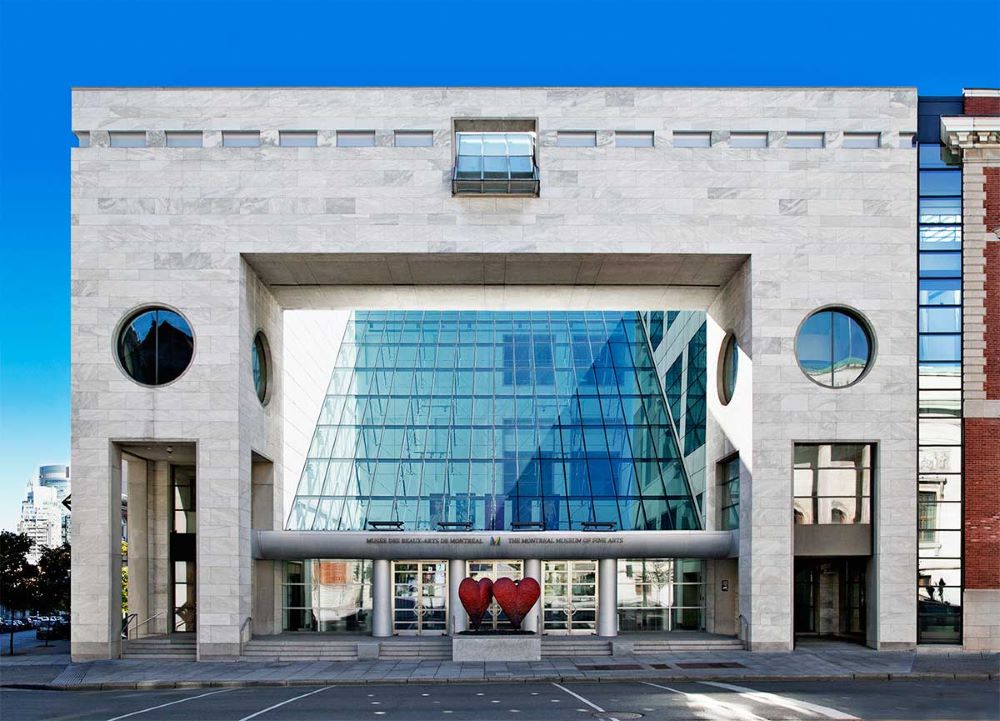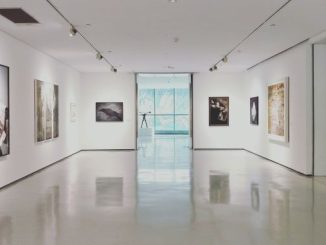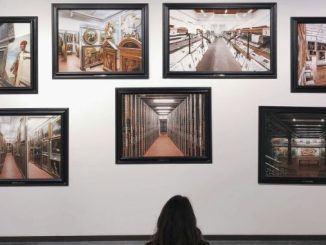Seeing loud: Basquiat and Music is Montreal Museum of Fine Arts’ first large-scale multimedia exhibition. Presenting around 100 of his artworks, along with sound and film clips, and other documented things, and even using an app they made for people to look at more details, they created immersing installations to show Basquiats ’mixed media arts. The MMFS’ own first integration of mixed media exhibitions uses this opportunity to present this type of modern mixed media arts, and the development of it from Basquiat. Devoted to his music and its role in his art, SAMO: Seeing Loud is mixed media arts of music and other artistic composures portraying the physical, realist symbolism and metaphors of his impressionistic art as abstract fine art. The exhibition demonstrates his impressionism in its’ still new and undeveloped ways. This exhibition challenges the limits and definitions of it in the art world by reflecting on the way in which Basquiats’ mixed media arts ism of realist and abstract arts. In Fine Arts, this integration maintains a form of human composure that reflects the efficacy of arts’ intentions. Through his own interpretations of life and art, he escalates his art to the foreground of visual and auditory art, in his epoch-making expressionism, into something that’s of both realism and abstractism. Focusing on his use of subjectivity alongside music, and how he incorporates and uses multiple aspects of music, SAMO: Seeing Louds’ exhibition presents his art and music as interwoven.

Showing Basquiats’ meshwork of art and music, the MMFAs’ first art & music mixed media exhibitions’ is vital to expressionism, both in their Fine Art statements and support. Using multimedia intentions, SAMO: Seeing Loud exhibits modern thought determining multimedia effect, even with well-built philosophy. The artistic or auditory thoughts that occur from it still have undeveloped ideas and can be really emotional, even painful. These experiences Basquiat evoked with abstractionism present the opportunity to live “seeing loud”. His ideas are grouped into a subjectivity that reflects the modernity of experience in its’ circumstance of time and place, but the art it represents is more about art and music from a humanistic, cultural point of methodology. This method is determined now in the modern world as a humanistic system built from everything we’ve had, yet it fails or expresses wrongness in many ways. In all its capacity of capabilities, this kind of art is sentimental in only truth, representing lots of detrimental states of existence. This contemporary artistic style expresses symbolism, sound, and sight together. These humanistic perspectives are based from art, and now determining things like their social use; art in its abstract ways determine a realism that is only disciplinarily still being defined. In a lot of ways, neo-expressionism benefited the world in ways that represented all kinds of struggles, from that with art, with its emotions, with life, with culture, with high class, and more. Alongside this art focus, he was using the music that had influenced him and also looking at the music he had made. Through this, his art showed a constancy of things like rhythm and movement into integrated art.
Through the influences of genres like jazz and rap, his influences were expressed in his constant integration, separation, innovation, separation, and distinction. The way that he had made his symbolism expresses the relationship between the mind and being with art that is existential. Seeing Loud is vital to current society because it shows how one person’s life is inevitably constantly encountered by the memories and experiences of their life. Basquiats’ revolutionary thoughts were so important, his work recognized early in his life had impacted the world and was then entirely expressed in it. His art is widely identified for both his artistic talent in all his pieces, but more so the overall integrity of his constant work as a young but founding artist. From people collecting his pieces, each Basquiat piece was remarked by his talent. His mixed media aspects of his art helped advocate for things like the determinism of it. Showing his evocations with music, the MMFS art & music mixed media exhibition uses these installations to create great experiences alongside the art for Basquiat and modern Fine Art culture, which benefits again what he did for contemporary culture through its expose. His interpretations and realism expresses a confounding nature in things like his constant references to specific things or expression of the way music can be understood as a constant experienced ‘esse’, or essence/ essential nature. These experiences are so important but rarely experienced in expression because art, music, mixed media arts, and culture is limited in its definitive ways and measures. Through their duality, art and musics’ true expressional reality is exposed.
Everything he did was based on the things that surrounded him and the life surrounded him. He fought for things in opposition to larger powers that argued to have more for people, like subsistence and counter culture. He provided the depth to art and media by making a broad usage of it that wasn’t able to used in art and life in the mediating ways that Warhol and Basquiat were using it to be. Rather than being the first artists to use this art, they examined a really subjective aspect of it that constantly related to a social perspective that helped create and see this kind of abstract reality in different types of arts, even more so when used together. First using his arts mainly on streets and shows, his impact changed art in a cultural, linguistic and contextual way that became revolutionary through both the thought and the abstractism in neo expressionism. With Warhol, he became as famous and revolutionary as someone working with Warhol could be, but Basquiat particularly brought his own Warhol-like expressionism that made him stand out even beside him. Presenting the art and/of living in humanistic culture so vicariously, his point of view really reflected other points of life that continue to define it, and still do. Using these methods of modern thought into art and music created its own high class art through all the work they composed, and their subjective views. Basquiats’ art was recreated into a reflective art giving it multiple points of humanistic value, in a really powerful linguistic, artistic, and cultural method, from both a personal and generalized view. Revitalizing ideas, art and things that exist of and for people, especially whose impressions developed this kind of artistic style or sense, SAMO: Seeing Loud abstracts the expressionism of integrated abstract and realism as its’ continuing to be one of the most things to do for this revolutionary artistic movement.
Seeing Loud helps this revolutionary artistic movement by integrating multiple art disciplines and mediums from fine art and graffiti art, to music and video that recreates an effect of artistic subjectivity. In turn, the subjectivity of an artist reflects a higher level of consciousness and manifested the effects of overall objectivity from all sources. This is something that Fine Art explains as what conscious aesthetic is most exemplary. This kind of cultural philosophy is a phenomenon of the human experience and is manifested by the life and lives that we live. For Basquiat, art is expressed as musically as it was visually. The MMFAs’ Seeing Loud exhibition works for him because it’ presented it in a way that makes it more renowned in the fine art world while in the same kind of method making its mixed media arts multi-disciplinary. Rather than limiting or creating it in some mostly fine art way, this integration of mixed media is also entirely an integration of all, mostly abstract and realist disciplinary art. His art and its humanistic idolization and ideas show his point of view and being. It changed things like the components of abstract art that becomes fine art, and the high culture of it, as well as music. He, for a lot of things and reasons, within a certain time frame, or place, or people related it to a greater measure that showed his involvement in things like black power, and how it impacted his life. A lot of his ideas were evoked by problematic issues or feelings affective by and even towards this kind of art style in a way that’s both realistic and abstract, and emotional. This revolutionary thought was so important in bringing the complexity of the current lifeworld to art and how it reflects how we think. It also easily shows how just on the surface, the basic things like social scripts intertwine and create social impressions and conditional experiences. This kind of impressionism is an artistic style that wants to focus less on generalized social impressions. Its’ power is redefining things like high class art with a constant integration of all art and its’/all culture. His impressionism helped to recreate art interpretation and art in the modern and constant progressing world.
Basquiats’ self-reflection was so vivid, it was always understated, no matter how he was reflecting the world around him. Seeing Loud presents the opportunity to see the renowned artist in the light of today’s progress of impressionism, art and the art culture world. In the music movements around him, he evoked both the pain and the power in a projectively momentary and constant way. Through the complex foundation of all the things going into the musical movements around him, from the black power, to the emotionality of composure, his music was made with so much real intention. Seeing Loud shows his activism in art, from who influenced him, to why, and that these things he expressed, through sound, emotion, in repetition, or in movement, are simply composed from within the idea of something, anything, that’s composed. From his expressions rose what he both thought and felt intentional. It is meant to express a process of symbolism, to an abstractism, to a surrealism, and then realism; showing the conceptual realities that build up art, his abstractions created his realistic, abstract artistic style. This arises from many things like moods and thoughts that crossed lines almost between thought and idea, or image, and represented itself in form as art, as thought. The way music feels is constantly moving and through these feelings, he channelled his surreal abstraction.
These interpretations of art and music is objected by things that are random or particular like colour and form. The method of his references to specific things is the artistic way that music and other arts are understood as an experience like a memory, emotion, and interpretation. It’s interesting to see the storyline of how his art is made, and how whether it is intentional or not. When conducted with music, Basquiat became very subjective, no matter what objective influence was reflecting his own mind constantly. His internal understanding was overtly reflected in external ways. He was so vividly imaginative that his world in turn was crafted by a lot of things in it that were important and painful things. Focusing a lot of the dispositional feelings of his own experiences, the life he had personally suffered was only a reflection of the hatred and injustice that surrounded him; through sorrows and strengths he had faced, he knew how to embrace the artistic and humanistic injustice in a somehow positive way. The ways in which he continued to focus on the wrongness and the expression of the world ended up provoking the humorous, vivid, lifelike, storylike, or representational matters; these ways express constant conditions of phenomenological concurrences that remain inseparable between a visual and mental/cognitive understanding. This emotional aspect of linguistic and artistic complexity is similar to the way in which one person has a signature or artistic style but expresses a deeper side of human composure. Seeing Loud represented this understanding by bringing this kind of mannerism to the forefront of the art world in Montreal, Canada, and in general. The new tones of human composure in art are more free, and more relieved by this kind of action taken.
These aspects of living and art represent themselves as something that resembles logos, or pictograms, ideograms and logographisms. As an artist and writer, in the complexity between human culture and human composure, I focus on these logographisms and present them again in the art and language arts world as linguistic and abstract concepts that illustrate these ‘word’ art realities. These lines, dots, shapes, forms that are really just components of reality, are also these expressions that end up representing things like sound, colour, etc as a kind of morphemic thinking and feeling, and seeing. The lines that it makes are emotional or evocative in the same way that morphemes just make up words; yet like pausing to think, we might pause and think again, beyond the word, or any sense of it, and visualize, and impressionate things like sound, provoking ideas or impressions like colour. Through these ways of linguistics, human experience is confounded in the same way we visually exist, think and see. It is a composure that is “Seeing Loud”, connoted in the title, and in, or as, a manner of art, culture, and time, from a discipline and industry that can denote it to be so. This physical abstractionism – morphemes, sound, colour, movement, thought, words, lines, imagery, and pictorial definitions work their way into art like colours, and lines and intermeshes of them. The things that they create are concepts created by the context around us. The importance in the world of art and life of people is embraced by SAMO: Seeing Loud, and will last well into the future even though it has come to an end. Montreal benefited greatly from this, and with high hopes, the changes that Basquiat made will continue to be exhibited like this. There has been a long need for Fine Art to recognize the true subjective capacity of itself, especially as it is defined and pertains to other art and aspects of culture and consciousness. While this feels like it could be yet another slow beginning in bringing one trial of art and personhood that started and ended in unfortunate ways, the pace of Montreal and the MMFA can help upkeep and redefine the reality of the art and disciplinary world, and human culture. In a resolution for Basquiat, it would be the continued hope and prosperity of people for all the things we do for these experiences and events to help focus on the heart of it all, of humanity and human beings and any way we can exist.
Music Influenced the Life and Work of Jean Michel Basquiat




